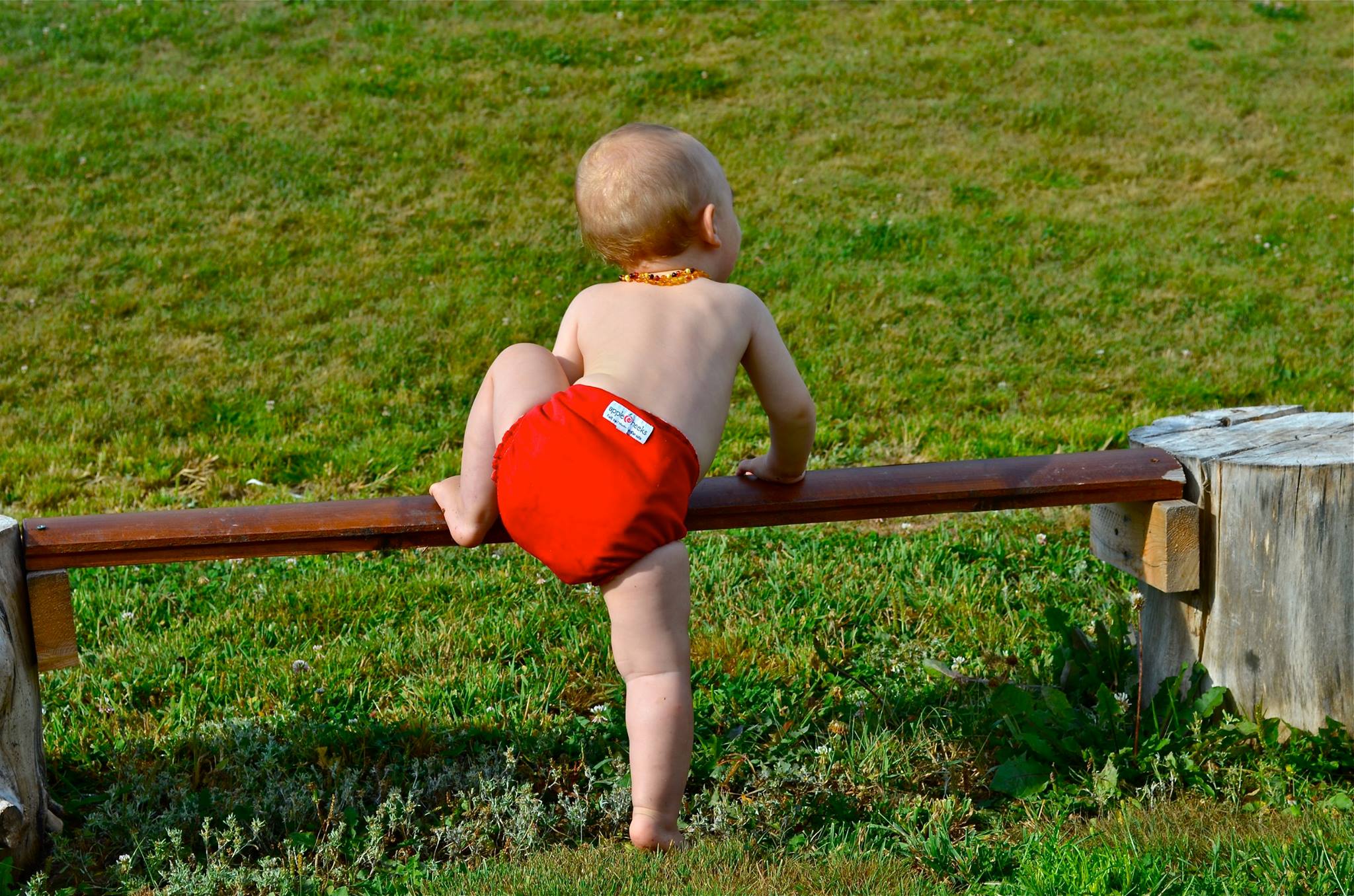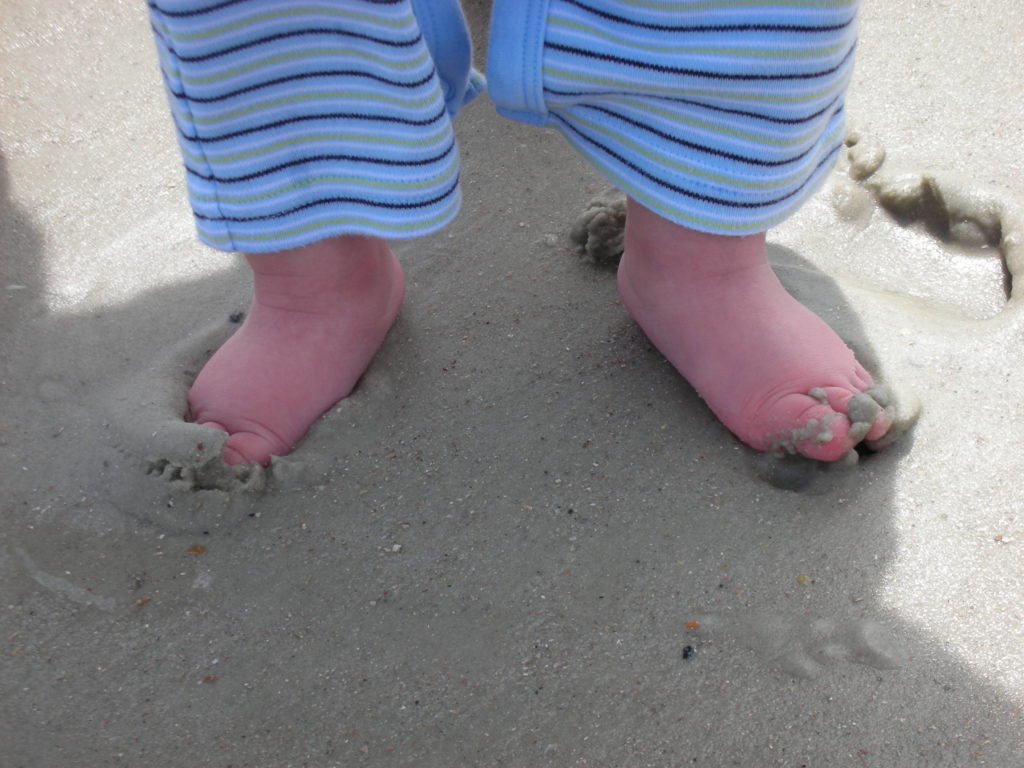June 13, 2021
Going barefoot is the gentlest way of walking and can symbolise a way of living – being authentic, vulnerable, sensitive to our surroundings. It’s the feeling of enjoying warm sand beneath our toes, or carefully making our way over sharp rocks in the darkness. It’s a way of living that has the lightest impact, removing the barrier between us and nature. – Adele Coombs, “Barefoot Dreaming”

When I was little, summer consisted of climbing our front yard tree, pretending to be Laura Ingalls Wilder, hanging upside-down from an old fence post and generally cavorting around in my bare feet with my siblings. We were free, and that meant unleashing our toes and tossing school thoughts aside to set our sights on absolutely whatever came to us at the moment. For me, being barefoot was summer, as much as trips to the lake, ice cream truck treats and the drive-in movies.
Sadly for many years now I have noticed parents insisting their young children wear shoes where my little ones would want to go barefoot. I’ve also noticed many children not just uninterested in having bare feet, but even uncomfortable, in pain or afraid of having barefeet. It would seem a passing curiosity, except that I love having bare feet even as an adult, and consider it rather an essential part of childhood. So, I’ve continued to wonder at these observations. Whatever the reasons, we definitely have separated from barefeet in childhood being a norm. It seems that as with anything, time and separation from such ways of life rid us of something we once knew to be intuitively good. And just as it goes with many of these lost traditions, a better intellectual understanding of why they are good may bring us back to them.
Earthing
There has been a trend towards returning to barefoot walking, even running, in the last decade which has led to a lot of research on why it is important. There is even a special term for it- “earthing”. “Earthing” (also known as “grounding”) refers to regularly walking barefoot on soil, grass, sand or any natural surface. So why has it made a return, and why should we all kick our socks and shoes off more often?
Let’s try it out. What happens when we step out into soft grass or sand and start walking? For me, it’s an immediate relief and, well, grounding experience. I sigh internally and relax, soaking up the calm energy of the earth. I consider it a spiritual energy, but science also attempts to explain what this calming impact is on a physical level that leads to lower stress levels, increased sleep, and reduced inflammation. A study from the Journal of Alternative and Complementary Medicine elaborates:
“The most reasonable hypothesis to explain the beneficial effects of earthing is that a direct earth connection enables both diurnal electrical rhythms and free electrons to flow from the earth to the body. It is proposed that the earth’s diurnal electrical rhythms set the biological clocks for hormones that regulate sleep and activity. It is also suggested that free electrons from the earth neutralize the positively charged free radicals that are the hallmark of chronic inflammation.”
Perhaps it is one of those incredible places in which we can see spirituality happening on a physical level! Who’s to say electrons and the diurnal rhythms of nature aren’t spiritual matter? Feeling the earth beneath my feet reminds me to pay attention. I slow down and tread lightly, becoming more conscientious, even reverent, as I walk surrounded by the loveliness of nature.
As a child I was not so awake in my walking, but the relationship I formed being closer to the earth still grew and endured.

Now, if I pay attention to my bare feet after a long winter with shoes, I can actually feel where my muscles, tendons and ligaments haven’t gotten the work or stretching that they need. My toes spread out more and as I walk the muscles in my feet and ankles are more challenged, especially walking on sand. There is a lot of mechanical conditioning occurring. When toddlers are learning to walk they are often allowed to be barefoot, but earlier and earlier their feet are encapsulated before their true gait is fully developed and this can cause mechanical problems in their future. Not only is it important to develop this natural step, there are other essential benefits to walking barefoot. As we step, our body receives sensory feedback that helps process and develop the sense of touch. This feedback also develops the proprioceptive system, which from birth is building a neurological map of the body for motor function in a part of the brain called the homunculus.
It is pretty incredible to bring a modern comprehension to something intuitively understood in the past. As my children and I kick off our shoes in celebration of summer freedom, I hope your family, too, takes a chance to soak up some tranquility through bare feet.

Cited in this article:
Oschman JL. Can electrons act as antioxidants? A review and commentary. J Altern Complement Med. 2007 Nov;13(9):955-67. doi: 10.1089/acm.2007.7048. PMID: 18047442.
